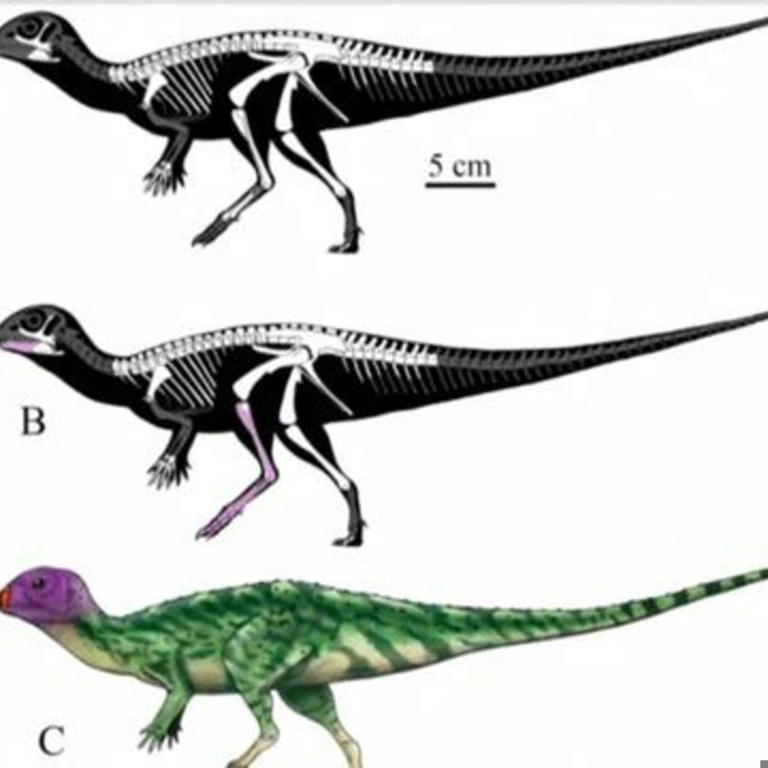Story by Allison Elyse Gualtieri • Yesterday

Credit: CBSNews
A dinosaur skeleton uncovered by scientists in northeastern Thailand is likely that of a newly discovered species, Minimocursor phunoiensis — and its kind was abundant 150 million years ago on what is now the Khorat Plateau, researchers said.
The skeleton "represents one of the best-preserved dinosaurs ever found in Southeast Asia," scientists said in a paper describing the find published earlier this month.
It is fairly complete from the base of its neck to the base of its tail, said paleontologist Clint Boyd, "including a well-preserved hand, which doesn't happen often in these animals. So it's giving us a lot of information about the early evolution in this group of what we call ornithischian dinosaurs."
These dinosaurs were the precursors to more commonly known dinosaurs such as Triceratops, said Boyd, who manages the paleontology program of the North Dakota Geological Survey.
Most ornithischians, like the newly identified species, were herbivores — plant-eaters — and likely lived in herds. They're named for the resemblance their hips and pelvises have to those of birds, and adults of different ornithischian species ranged from about 2 feet to approximately 50 feet long.
An analysis of the Minimocursor phunoiensis skeleton not only revealed the dino is a new discovery but that it was probably a fast runner. It also wasn't very big — researchers estimated the body length of the skeleton to be 60 centimeters long, or about 2 feet, and said an adult may have been up to 2 meters long, about six and a half feet, based on the length of other leg bones from the species found in the area.
"We usually think of dinosaurs as being these big, large, hulking animals, and this would be something more like a small deer-sized animal today. Not the most flashy animal in the environment, but at the time would have been a fairly common animal out there," he said.
While it likely walked on two feet, Boyd said, it didn't have flashy horns or armor and likely was at the base of the food chain.
Scientists said Minimocursor phunoiensis likely lived during the late Jurassic period, about 150 million years ago. Boyd said the find is exciting because "we don't have a good fossil record, from anywhere in the world, let alone Southeast Asia," from that time period.
The dinosaur, found in the Phu Noi area of the Phy Kradung formation in 2012, is the first to be named for the place scientists said "contains a wealth of specimens." The formation is "one of the richest Southeast Asian non-marine vertebrate bone-beds," according to the paper, and researchers from the Palaeontological Research and Education Centre of Mahasarakham University and the Sirindhorn Museum have been working in the area for a decade.
The specimen, which was more than 50% complete, is now at the university.
A dinosaur skeleton uncovered by scientists in northeastern Thailand is likely that of a newly discovered species, Minimocursor phunoiensis — and its kind was abundant 150 million years ago on what is now the Khorat Plateau, researchers said.
The skeleton "represents one of the best-preserved dinosaurs ever found in Southeast Asia," scientists said in a paper describing the find published earlier this month.
It is fairly complete from the base of its neck to the base of its tail, said paleontologist Clint Boyd, "including a well-preserved hand, which doesn't happen often in these animals. So it's giving us a lot of information about the early evolution in this group of what we call ornithischian dinosaurs."
These dinosaurs were the precursors to more commonly known dinosaurs such as Triceratops, said Boyd, who manages the paleontology program of the North Dakota Geological Survey.
Most ornithischians, like the newly identified species, were herbivores — plant-eaters — and likely lived in herds. They're named for the resemblance their hips and pelvises have to those of birds, and adults of different ornithischian species ranged from about 2 feet to approximately 50 feet long.
An analysis of the Minimocursor phunoiensis skeleton not only revealed the dino is a new discovery but that it was probably a fast runner. It also wasn't very big — researchers estimated the body length of the skeleton to be 60 centimeters long, or about 2 feet, and said an adult may have been up to 2 meters long, about six and a half feet, based on the length of other leg bones from the species found in the area.
"We usually think of dinosaurs as being these big, large, hulking animals, and this would be something more like a small deer-sized animal today. Not the most flashy animal in the environment, but at the time would have been a fairly common animal out there," he said.
While it likely walked on two feet, Boyd said, it didn't have flashy horns or armor and likely was at the base of the food chain.
Scientists said Minimocursor phunoiensis likely lived during the late Jurassic period, about 150 million years ago. Boyd said the find is exciting because "we don't have a good fossil record, from anywhere in the world, let alone Southeast Asia," from that time period.
The dinosaur, found in the Phu Noi area of the Phy Kradung formation in 2012, is the first to be named for the place scientists said "contains a wealth of specimens." The formation is "one of the richest Southeast Asian non-marine vertebrate bone-beds," according to the paper, and researchers from the Palaeontological Research and Education Centre of Mahasarakham University and the Sirindhorn Museum have been working in the area for a decade.
The specimen, which was more than 50% complete, is now at the university.
No comments:
Post a Comment